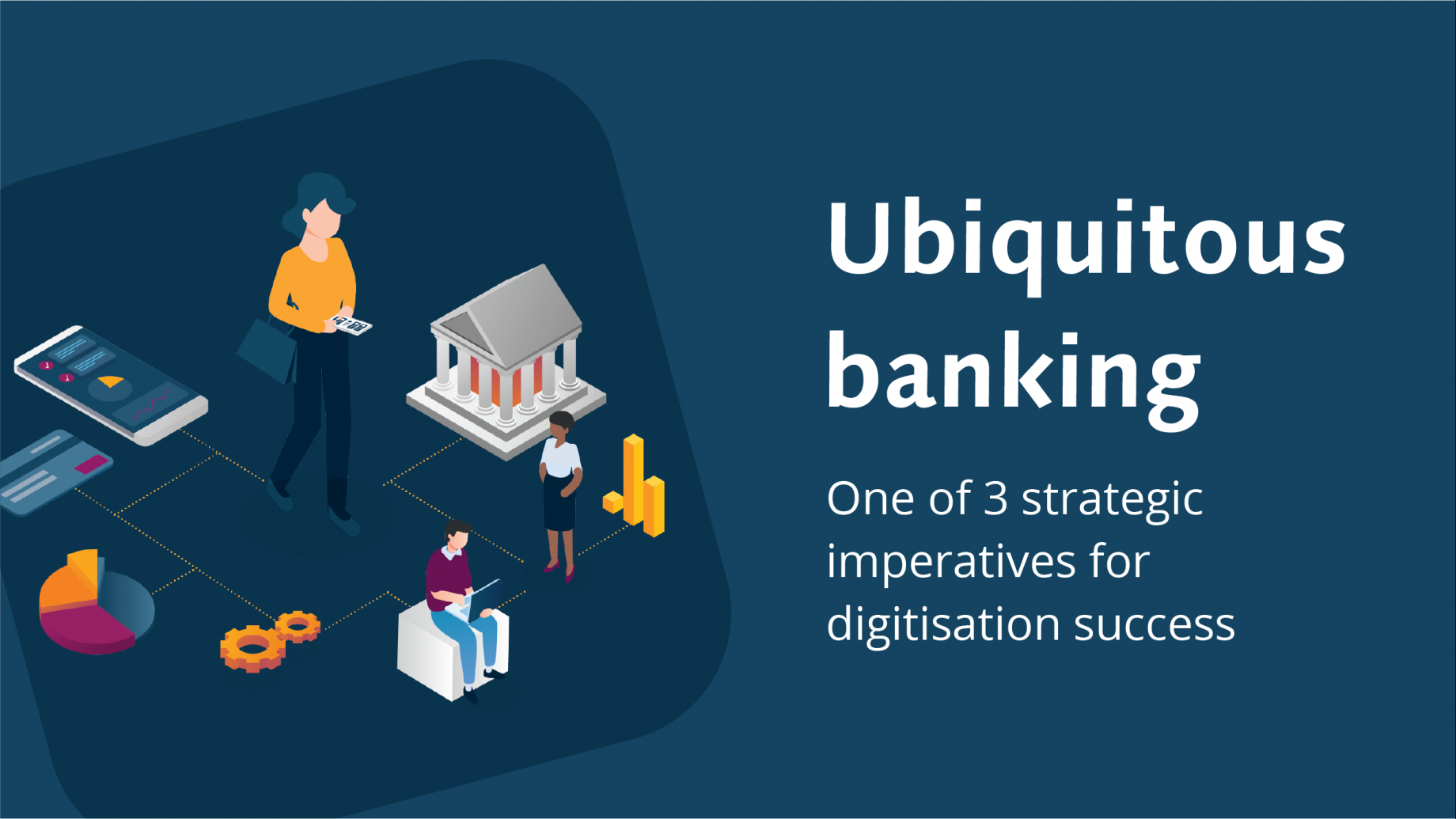
The final blog on the three strategic imperatives driving digitalisation in banking and wealth management focuses on ubiquitous banking.
Ubiquitous banking is basically the integration of banking services in a contextually-aware, useful and experience-centric way. It’s important because clients have become accustomed to ecosystem-based offerings and they expect the same integration and convenience in the finance sector.
When looking at ubiquitous banking, you can make a comparison with, say, Google Maps. What Google has succeeded at is creating an API which enables third-party app developers to use Google Maps within the context of their own apps – e.g. ride sharing or food delivery.
So, you have a product that other people are using as part of their product and this is when a service starts to become ubiquitous.
Relevance to clients
Ubiquitous banking is really about embedding banking in the everyday life of a user in non-obtrusive, value-added ways. The challenge is to make services relevant to clients and that means bringing them in at the right time and in the right context in a meaningful and value-added way for the client.
The loyalty platform is one use case that demonstrates the value of ubiquitous banking. Here, banks can achieve the API integration of loyalty points offered by third parties which can be assigned depending on customers’ transactions. Many banks already feature partnerships with high-street retailers to offer point exchange programs.
This is one simple example of how a service provided by a bank can be made more relevant to a client by informing them at the right time and in the right location. Banks can successfully leverage loyalty programs and really make them relevant in a ubiquitous and personalised way.
Download our E-book, "Digitalisation – 3 strategic imperatives for success", to learn more.




